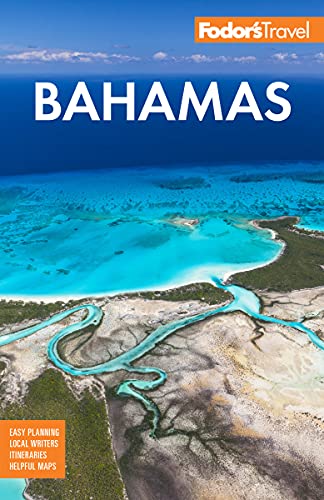The Bahamas Today
Development is no longer on the back burner in the Bahamas. The largest project, the Baha Mar overhaul of the Cable Beach strip on New Providence, is years behind schedule but will finally open in 2015, and it's bound to have a huge impact on tourism to the country. Many other new projects are under way across the islands, and Bahamians have used this slow period as an opportunity to spruce up existing properties and improve an infrastructure that was starting to show signs of age and neglect.
The British Feel Remains
From driving on the left side of the road (albeit mostly in left-hand drive cars) to tea parties to wig-wearing lawyers strolling into court, the Bahamas still has a decidedly British air about it. The country gained independence from England in 1973, but old colonial habits die hard. Bahamians learn British spelling in school, and the country still uses the Westminster style of government. That said, a constant diet of American media has had an impact on the country. Bahamians measure temperature in Fahrenheit instead of Celsius, and although the English gentleman's cricket is the national sport, you'll be hard-pressed to find a local who understands the game, much less plays it.
A Playground for the Rich and Famous
With its near-perfect year-round weather, modern infrastructure and amenities, and proximity to the United States, it's no wonder that the Bahamas is a home away from Hollywood for many celebrities. Sean Connery lives behind the gates of the exclusive Lyford Cay community on New Providence Island. Johnny Depp owns his own private island in the Exumas, as do Tim McGraw and Faith Hill, David Copperfield, and Nicolas Cage, who also owns a home on Paradise Island. Mariah Carey owns a private Eleuthera estate; the island is also home to Lenny Kravitz, whose mother, actress Roxie Roker, grew up there.
Many Different Destinations
The majority of the 6 million tourists who visit the Bahamas each year experience only Nassau, Paradise Island, or perhaps Grand Bahama. But with more than 700 islands, there's so much more to see and do. Each island offers a different flavor and none of them have the hustle and bustle of big-city life experienced in the capital. The farther south you venture, the slower the pace. Locals have distinct looks, dialects, and surnames on each island. White Americans and British settled in the Abacos and north Eleuthera, and their strong accents—putting an h where there isn't one and omitting one where there should be—help tell them apart from expats. Long Island is home to a large "conchy joe" population, white Bahamians who might have had a black great grandpa. Tell someone you're a Knowles and they'll want to know if you're a Long Island Knowles or an Eleuthera Knowles.
Still Developing
Bay Street, once Nassau's Madison Avenue, is on the road to recovery after years of neglect. The esplanade just west of downtown is undergoing a major transformation with new and renovated hotels, and western New Providence continues to be developed. The Lynden Pindling International Airport is now a modern gateway that truly welcomes visitors. And following a number of false starts, the multibillion-dollar Baha Mar transformation of the Cable Beach strip is now a reality. As Nassau continues to develop, the Out Islands remain untouched, preserving the quaint nature that attracts adventure travelers each year.
Not the Caribbean
Even though the country gets lumped in with the Caribbean in glossy travel brochures and on cruise itineraries, it is not geographically a part of it. Rather than being situated in the Caribbean Sea, the islands of the Bahamas are in the Atlantic Ocean. In fact, more Bahamians have traveled to nearby South Florida than to the Caribbean. But from a cultural and political point of view, the Bahamas is aligned with the neighboring islands. The country is a full member of the Caribbean Community (CARICOM) and Bahamians will cheer on their Caribbean brothers and sisters in any sporting match.
Sustainable Development
The government works closely with the Bahamas National Trust to identify and develop protected green spaces, adding more and more land each year to the National Park System, and any developer interested in putting up a sizable or potentially environmentally sensitive project anywhere in the country is required to pay for and submit an Environmental Impact Assessment before consideration is granted.




